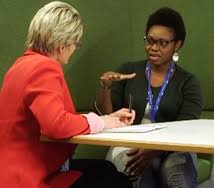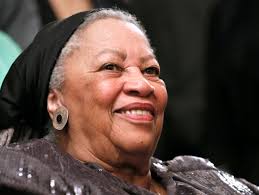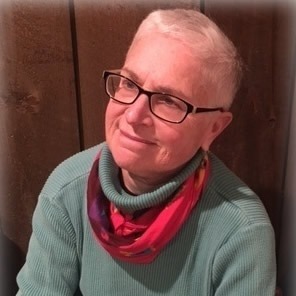as we work towards creating more inclusive and welcoming workplaces for all job seekers! It’s clear to many: It’s the people that we know – colleagues, former co-workers or supervisors, even friends and family members – who help us to open doors! Some estimate that upwards of 85 percent of open positions are filled through networking. 
No problem, right?…as long as you can work your network! BUT WHAT HAPPENS TO THOSE WITHOUT THESE WORKPLACE CONNECTIONS?! And then what is the impact on the composition of our workplaces and the talent within?
Prior to presenting a recent virtual JOB SEARCH workshop (through the East Greenbush Community Library), I reached out to a couple of friends. Teri, a recently retired teacher, realized as we spoke that she had learned of her two different teaching positions from friends already in the school districts to which she was applying.
Another friend Janet recently accepted a position at a large health insurance company. She learned of this position when she reached out to a former co-worker, now a supervisor at this insurance company. When a position opened up in this former colleague’s department, she immediately contacted Janet, her former co-worker.
In fact, when I asked Janet how she had learned of her previous position with a local hospital, she realized that again, it was through a friend. “When Leslie was looking to hire someone for her department, she reached out to me!”…a job that lasted for over 17 years! 
Not at all surprising! When we work together, socialize after work and ultimately get to know and depend on each other, TRUST IS BUILT. And trust is a huge factor in hiring decisions!
When we realize how separately black and brown and white residents live here in the Capital Region as elsewhere in our country, the impact should be predictable. “Among White Americans, 91% of their social networks are also White.” (from research included in the United Way’s 21 Day Challenge)
According to President and CEO of the Capital District YMCA J. David Brown, “Ninety-five percent of the time, I walk in the room and I’m the only person of color. I would say 99% of the time I walk in the room and I’m the only person of color and senior executive or president and CEO.” Lack of diversity is also evident “by the crowds at business events, by who is asked to speak on panels and in announcements from companies about new hires or promotions.”
And when our paths do not regularly cross, neither do word-of-mouth job announcements! And when we don’t run into our black and brown fellow citizens in the supermarket, at parties, in our places of worship or even while taking walks in our neighborhoods, it’s easy to hold on to limited and misinformation. Even when stereotypes and biases are unconscious, they impact our behavior!
Those job seekers who make it to the interview – but are not ”familiar” to the interviewer or otherwise connected – can also face hidden biases. Let’s consider what Howard Ross, Founder of Cook Ross, Inc. terms the “affinity bias.”
Imagine conducting an interview with two people, Ross suggests:
First you meet with John….
“John reminds you of yourself when you were younger, or of someone you know and like. You have that sense of familiarity or “chemistry.” …You ask him the first interview question and he hems and haws a bit…You say, “John, I know it’s an interview, but there’s nothing to be nervous about. Take a breath and let me ask the question again.” John nails it this time and he’s off and running to a great interview.
Then you sit down with Sally. There is nothing negative about her, just no real connection…You ask her the first question and she’s a little nervous too, but this time you don’t pick up on it. This interview moves forward, but not quite as well as John’s. The next day, a co-worker asks you how the interviews went, and you respond: “John was great…open, easy to talk to. I think he’ll be great with staff and clients.” And your reply about Sally? “She’s okay, I guess.”…Your own role in influencing the outcomes was completely invisible to you…” (Diversity Best Practices’ publication “CDO Insights”)
So what needs to change so that workplaces truly open their doors – at all levels – to black and brown (and other less visible) job seekers? 1st, As Pinnacle Human Resources President Rose Miller discussed in a recent Albany Business Review Straight Talk conversation, “Change across the organization will only happen when leadership’s vision and intentions set the expectation for the entire organization!”
HERE ARE SOME SPECIFIC SUGGESTIONS!
For those in the interviewing role:
LOOK FOR EACH APPLICANT’S STRENGTHS AND SKILLS!
All of us involved with interviewing candidates know that that it takes time to really get to know an individual – their strengths, motivation and skills! I have learned after 30 years that it’s easy to be fooled by a person in a 30 minute interview! A person can present self-confidently and motivated & in fact feel terribly unsure of themselves…on the other hand, a person can present as if they have nothing to offer…and underneath that veneer, have tremendous potential and talent. 
So go beyond appearances, engage in a conversation and…
Listen, listen, listen
Ask open-ended questions and clarify:
- “Tell me more about your last job?”
- “What did you enjoy most?” “Can you give an example?”
- “What were you looking for when you chose to leave the job?” “What job/career were you wanting to pursue?”
- “What do you do when not working?…spend time with your family?, volunteer in the community?,…”
- “What’s most important to you on a job?/What brings you the most satisfaction?”
Look for applicant’s unique strengths, interests, aspirations and challenges…
Try not to make assumptions!
For those of us, who are not in interviewing or workplace leadership roles, (but want to see change) there are lots of opportunities! Just think about the impact of word-of-mouth networking! BECAUSE WHITE AND BLACK AND BROWN FOLKS DON’T TYPICALLY MEET IN OUR EVERYDAY ROUTINES – Teri and her 2 colleagues who helped to open doors for her and Janet, her former supervisor and Leslie are all white – we will likely have to step out of familiar habits and consider new ways of thinking and doing…
If we hear of a job opportunity, make a point to reach out to a black or brown friend, who may have a son or daughter, friend or neighbor or current or former co-worker, with experience, abilities and interests that match!
Let friends and colleagues know that you are open to having job seekers conduct an informational interview with you…to learn about your career path, how you got to where you are, tips on getting into the workplace and for help connecting to others in the workplace. It’s a powerful way to help individuals to build self-confidence, greater understanding of the workplace and a strong workplace network!
And when/as organizations reopen, invite a colleague of a different background to a social gathering or business networking event, suggest lunch or coffee, visit a black or brown co-worker in “their neck of the woods”, frequent black or brown-owned businesses…
Seek out opportunities to learn outside of mainstream media…EXPOSE OURSELVES TO OTHER VOICES!
Gain empathy and understanding by hearing the stories of struggle and resistance of black and brown Americans.
Be inspired by individuals’ and organizations’ rich and varied contributions and perspectives!
Set goals to read fiction and non-fiction by black and brown authors…
Novels by Pulitzer Prize Winner and former UAlbany Professor TONI MORRISON…“Beloved”, “The Bluest Eye,” “Sula”, “Song of Solomon and Nonfiction volumes… “Playing in the Dark: Whiteness and the Literary Imagination”. 
In “THE WARMTH OF OTHER SUNS”, by Isabel Wilkerson, history comes alive! Wilkerson chronicles the decades-long migration of black citizens who fled the South and Jim Crow.
Listen to interviews and podcasts of black and brown women and men using their talents in unique and meaningful ways… I am personally enriched when I listen to some amazing interviews with black and brown women and men on NPR’s (90.3 FM) weekend editions. Not only will you be inspired, but you may find that you have a lot more in common with others than you imagined…
Get involved with nonprofit organizations like the UNDERGROUND RAILROAD EDUCATION CENTER…
“Think You Know the Underground Railroad? Visit The Stephen and Harriet Myers Residence for a journey through the real story of the Black Abolitionist movement and celebrate the thousands of unsung, everyday heroes who worked to move our country closer to true democracy.” From website front page
And GET TO KNOW our black and brown friends, co-workers outside of small talk! As trite as this might sound, wow, can this make a difference in building understanding and trust! Just think of how we feel when someone conveys interest in our family or a special hobby or our work?!
ULTIMATELY, WE ALL BENEFIT when our workplaces become truly inclusive and our networks and friendships more diverse….not only from a business perspective, but also personally. There’s a sense of pride when we contribute in some way to creating a more just and open-minded world. It can also relieve each of us of the pressure to conform. I know for myself – of retirement age, but still very much in the work world, in a long-term same sex relationship, Jewish and leaning towards the introverted end of the extrovert-introvert spectrum – I don’t match the media images! But diversity in my life widens my world… and gives me permission to appreciate my unique perspective and contributions!

